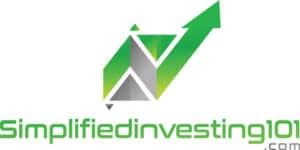
Getting started investing early is a great way to build wealth. After all, interest returns compound over time, and starting early can potentially give you an option to retire early.
The minimum age to buy stocks in Canada is 18 or 19 years old, depending on the province a person is living in. This is the age of majority when people can legally enter into a contract and own stocks. The list below will show the age of majority for each province in Canada:
18 Years Old
- Alberta
- Manitoba
- Ontario
- Prince Edward Island
- Quebec
- Saskatchewan
19 Years Old
- British Colombia
- New Brunswick
- New Newfoundland
- Northwest Territories
- Nova Scotia
- Nunavut
- Yukon
These are the age of majority for each province in Canada when one can buy or sell stocks. Also, the age of majority of 18 or 19 years old is the minimum age to open a credit card or apply for a personal loan for a car or other things.
Alternatives
1. Practice Investing with Virtual Cash
You can practice stock trading and invest with howthemarketworks.com for free. You can start with a virtual $10,000 or $100,000 to practice trading stocks listed on stock markets in US or Canada.
You can practice a long-term or short-term trading strategy. When your account balance on howthemarketworks.com increases or decrease, this will not translate to making or losing real money on a practice account.
Trading on a practice account will help you gain experience and potentially be ready when you turn 18 or 19 years old where you can invest real cash and own stocks.
2. Ask Your Parents
Another option is to ask your parents to buy stocks and hold stocks in their name for you and ask them to transfer stocks when you turned 18 or 19 years old. On this route, the stocks are owned by them legally. Thus, they may have to pay taxes in case the stock value increase.
Investing Platforms in Canada
1. Wealthsimple Trade – Stocks & ETFs
You can buy or sell stocks in the United States and Canada through Wealthsimple Trade. Thousands of stocks and ETFs (Exchange Traded Funds) can be traded through Wealthsimple Trade. Also, fractional trading is available on popular stocks such as Tesla and Apple stock.
- No minimum requirement. Anyone can start with $100 or less.
- $0 commission fees on trades
- 1.50% exchange rate fee for US dollar trades
- Fractional Trading
- More than 2 Million People have a Wealthsimple account
- Best for Beginners – Platform is simple and easily understandable
Visit wealthsimple.com for more details.
Wealthsimple Tutorial – How to Buy or Sell Stocks
Wealthsimple Video Tutorial: How to Trade Fractional Shares on Wealthsimple Trade
2. Questrade – Stocks, ETFs, Bonds, Options, etc.
- Minimum of $1,000 to open an account
- $4.95 commission fees for every stock trade (buy or sell)
- 2% US dollar exchange rate fee
- Questrade is operating for more than 20 years. More than 200,000 new accounts every year
- Platform is a bit more complicated than Wealthsimple Trade
Questrade – How to Buy and Sell Stocks
The tutorial video is done on a Questrade Margin account. The process of how to buy and sell stocks in a Questrade TFSA is the same.
Margin account may not be the ideal for first time traders. Margin allows clients to borrow money, which can be risky.
Types of Investing Accounts
The best types of accounts for first time traders are TFSA and Personal (Cash) or Margin accounts. RRSP may not be ideal since RRSP is designed for retirement investments.
Both Questrade and Wealthsimple Trade have TFSA and Personal or Margin accounts. These investing accounts can hold stocks, ETFs, and possibly other assets.
Personal/Margin and TFSA accounts offer the most flexibility since you can add or withdraw funds anytime. Also, there is no limit on the number of trades in personal and margin accounts.
| TFSA | Personal or Margin |
| Profits are Tax Free | Gains are taxable |
| Funds can be withdrawn anytime | Funds can be withdrawn anytime |
| Deposit limited up to TFSA contribution limit | No limit on the amount of deposits |
TFSA (Tax-Free Savings Account)
Profits from stocks inside a TFSA account are tax-free. Also, losses are not tax deductible. TFSA accounts have a contribution limit of about $6,000 every year.
Personal
Personal account on Wealthsimple Trade is more commonly known as a cash account. Profits on stocks inside a Personal account are taxable when it is sold. At the same time, losses may be tax deductible for future gains.
Personal account have the most flexibility since there is no limit on the amount of deposits or withdrawals to a Personal account. Also, there is no limit on the amount of trades a person can do inside a Personal account.
RRSP (Registered Retirement Savings Plan)
RRSP accounts may not be ideal for beginners since RRSP is designed for retirement. RRSP accounts are commonly used to take tax deductions from employment income and withdraw funds from RRSP as a source of retirement income.
Here is the full comparison between TFSA, RRSP, and Personal accounts in Canada.
